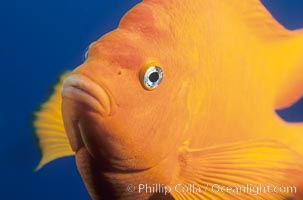Elite 8: #1 Wisconsin v. #2 Oregon - Sat 12/9/23, 7 PM CT
Dec 7, 2023 21:40:24 GMT -5
via mobile
bigfan, Wiswell, and 13 more like this
Post by rainbowbadger on Dec 7, 2023 21:40:24 GMT -5
| Elite 8 #1 Wisconsin v. #2 Oregon |
| Saturday, Dec. 9, 2023 7 PM CT / 5 PM PT |
| UW Field House Madison, Wisconsin |

Follow Along
🎟: SeatGeek
📺: ESPNU / ESPN+
📊: StatBroadcast
🎧: FoxSports 1070 AM Madison
🏆: Interactive Bracket
Players to Watch
Wisconsin
 |  |  |  |  |
#13 - OH Sarah Franklin 6-4 R-JR | #14 - MB/RS Anna Smrek 6-9 JR | #10 - MB/RS Devyn Robinson 6-2 SR | #52 - MB Carter Booth 6-7 SO | #12 - OH Temi Thomas-Ailara 6-2 GR |
Oregon
 |  |  |  |  |
#15 - OH Mimi Colyer 6-3 SO | #8 - OH Gabby Gonzales 6-3 GR | #17 - MB Kara McGhee 6-5 GR | #9 - S Hannah Pukis 5-11 R-SR | #10 - L Georgia Murphy 5-6 SR |
History
The Series: Tied 1-1.
In Madison: Wisconsin leads 1-0.
Neutral: Oregon leads 1-0.
The Streak: Wisconsin won the last one.
Last Meeting: Wisconsin won in 4 sets during Round 1 of the NCAA Tournament in Madison on 12/3/15.
Did you know…?
There are over 100 species of ducks, divided into three categories: Dabbling ducks, who stick their bottoms up in the water while searching for food below the surface; Diving ducks, who dive fully below the water surface in search of food; and Perching ducks, who nest in trees and sit on high branches. Green-headed mallards are dabbling ducks.

A mallard drake and hen in bottom-up dabbling position
All ducks are capable of a trick that has eluded college students for centuries: The ability to sleep with only half of their brain at a time, a practice called unihemispheric slow-wave sleep. This phenomenon was observed and documented by then-PhD candidate Niels Rattenborg during his doctoral studies at Indiana State University in 1999. Dr. Rattenborg and his fellow researchers monitored the eye movement and electrical activity of the brain hemispheres of mallard ducks as they slept in rows of four. Yes, they really did do EEGs on those little green duck heads. They found that while the ducks in the middle of the row closed both eyes and allowed both halves of their brains to sleep, the "sentinel" ducks on either end kept their outward-facing eyes open and the contralateral (opposite-side) halves of their brain awake. By observing their responses to threatening visual stimuli presented to the open eye - the ducks "rapidly initiated escape behaviors" - the researches concluded that ducks have evolved the ability for unihemispheric sleep as a predator detection function.

The outermost ducks in a group sleep with half of their brain and one eye open to watch for predators.
I guess you could say that Rattenborg really had his ducks in a row. He was awarded a PhD in Comparative Physiology for his work, Facultative control of avian unihemispheric sleep under the risk of predation, which he published in the the journal Behavioural Brain Research. He then spent a five-year postdoctoral fellowship just a couple of miles from the Field House, at the UW-Madison School of Medicine & Public Health's Department of Psychiatry. He now runs the Avian Sleep Research Group at the Max PLanck Institute for Biological Intelligence in Planegg, Germany.








